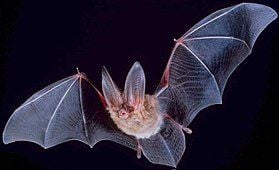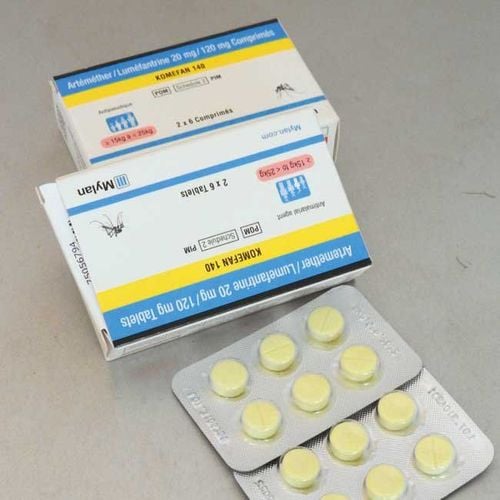This is an automatically translated article.
Ebola is one of the most dangerous diseases and leaves the most devastating consequences for human health. This disease is caused by a virus and is easily transmitted from person to person. Without prompt treatment, the mortality rate can be as high as 90%. So what is the Ebola virus and how does it spread?1. What is Ebola virus?
Ebola virus (EVD) is also known as Ebola hemorrhagic fever (EHF). EVD can cause an acute illness, dangerous to human health and has a very high mortality rate if not treated promptly. When infected with Ebola virus, the immune system and vital organs in the body will be attacked and severely damaged. In addition, it also reduces clotting factors, causing uncontrolled bleeding.Ebola first appeared in 1976, after 2 simultaneous outbreaks- one in Nzara, South Sudan and the other in Yambuku, DRC. The latter happened in a village near the Ebola River, so the disease was named after the river.
The 2014-2016 pandemic in West Africa was the largest Ebola outbreak since the virus was first detected in 1976. The outbreak began in Guinea and then spread across land borders to Sierra Leone and Liberia. This was followed by the 2018-2019 Ebola outbreak in the east of the DRC (Democratic Republic of the Congo) with very complicated developments, which brought about insecurity along with serious consequences for the health of the community. .
Filoviridae virus family includes three genera: Cuevavirus, Marburgvirus and Ebolavirus. Within the genus Ebolavirus, six species have been identified: Zaire, Bundibugyo, Sudan, Taï Forest, Reston and Bombali. In particular, the virus that caused the outbreak in West Africa in 2014 belonged to the species Zaire ebolavirus.
2. How does Ebola virus spread?

Dơi ăn quả thuộc họ Pteropodidae là vật chủ tự nhiên của virus Ebola
Ebola virus disease is not airborne and is not spread by casual contact, such as being near an infected person. Unlike respiratory illnesses, which can be spread by airborne particles after an infected person coughs or sneezes, Ebola is spread through direct contact with the bodily fluids of an infected person.
Ebola is transmitted from person to person through direct contact (through broken skin or mucous membranes in the eyes, nose, or mouth) with:
Blood or body fluids of someone who is sick or has died of Ebola Subjects contaminated with bodily fluids (such as blood, stool, vomit) from a person with Ebola or the body of a person who died of Ebola. Objects (such as clothing, linens, needles, and medical equipment) that are contaminated with bodily fluids from a person who is sick or has died from EVD. Semen from a man who has recovered from EVD (through oral, vaginal, or anal sex). The virus can survive in some body fluids (including semen) of a patient who has recovered from EVD, even if they no longer have severe symptoms. Healthcare workers who are treating suspected or confirmed Ebola patients can also become infected through close contact with the patient. Infection prevention and control measures are not strictly followed.
Furthermore, Ebola can be transmitted through burial rituals that directly involve the body of someone who has died from the disease.
Remember, the disease can be transmitted at any time from person to person as long as their blood contains the Ebola virus. Pregnant women with acute Ebola infection and who have recovered from the disease can still carry the virus in their breast milk, or in fluids and tissues associated with pregnancy. This poses a risk of transmission to the child and to those around him.
3. Symptoms of Ebola
The incubation period, that is, the time from infection with the virus until symptoms appear, is 2-21 days. A person infected with Ebola cannot transmit the disease until they develop symptoms.Common symptoms of EVD can be sudden and include:
Fever Fatigue Muscle pain Headache Sore throat Vomiting Diarrhea Rash Symptoms of kidney and liver function failure In some cases, side bleeding internal and external (eg, bleeding from the gums, or blood in the stool). Diagnostic tests showed low white blood cell and platelet counts and elevated liver enzymes.

Sốt, mệt mỏi, đau cơ là triệu chứng thường thấy của bệnh nhân nhiễm virus ebola
4. Diagnosis of Ebola Virus
It can be difficult to clinically distinguish Ebola from other infectious diseases such as typhoid fever, malaria, and meningitis. In order not to confuse symptoms caused by the Ebola virus with other illnesses, the doctor may ask the patient to perform the following diagnostic methods:Enzyme-linked immunosorbent assay (ELISA) Test Antigen detection test Serological neutralization test Reverse transcriptase fusion reaction (RT-PCR) Electron microscopy Isolation of virus by cell culture. Test samples collected from patients represent an extremely dangerous biological hazard; on the other hand, these test samples are not yet inactivated, so physicians must be extremely careful about biological prevention.
5. Treatment of Ebola Virus
To improve symptoms caused by the Ebola virus and increase survival, patients infected with the virus need supportive care using methods such as using oral or intravenous fluids to rehydrate the body. .Currently there is no specific treatment for this dangerous disease. However, a wide range of potential treatments have been proposed, including blood products, medications, and immunotherapy.
The United States Food and Drug Administration (FDA) approved the Ebola rVSV-ZEBOV vaccine (trade name “Erbobo”) on December 19, 2019. It is a single-dose vaccine approved recognized as safe and effective against only Zaire ebolavirus species of ebolavirus. Another vaccine was also developed and announced in 2019 against the Ebola outbreak in the Democratic Republic of Congo. This vaccine uses two different vaccine components (Ad26.ZEBOV and MVA-BN-Filo) that are used only to protect against and against the ebolavirus species of Ebola.
6. Ebola Prevention and Control

Rửa tay thường xuyên là cần thiết sau khi đến thăm bệnh nhân trong bệnh viện, cũng như sau khi chăm sóc bệnh nhân tại nhà
Reduce the risk of transmission from wild animals to humans: animals that are at risk for Ebola should be handled with gloves and suitable protective clothing. Animal products (blood and meat) should be cooked thoroughly before consumption. Reduce the risk of person-to-person transmission: when in direct or close contact with people with Ebola symptoms, especially with their bodily fluids, you should wear appropriate gloves and personal protective equipment. when dealing with or caring for sick patients. Frequent hand washing is necessary after visiting patients in the hospital, as well as after caring for patients at home. Measures to prevent outbreaks: include burying the dead safely and quickly, identifying people who may have been in contact with someone with Ebola, and monitoring their health for 21 days. The sick person should be isolated to limit the spread to other healthy people. Reduce the risk of sexual transmission: WHO recommends that men who have recovered from EVD engage in safe sex and hygiene within 12 months of the onset of symptoms or until semen is ejaculated. Their test was negative twice for the Ebola virus. Reduced risk of pregnancy-related fluid and tissue transmission: Pregnant women who have recovered from Ebola need regular antenatal care, and safe assisted reproductive care. Source: Mayoclinic.org; CDC, WHO
MORE: Is
2019-nCoV the same as the virus that causes MERS and SARS? Guidelines for diagnosis and treatment of acute pneumonia caused by new Corona virus of the Ministry of Health To prevent 2019-nCoV, do I have to wear a mask continuously? What is the correct way to wear a mask?













